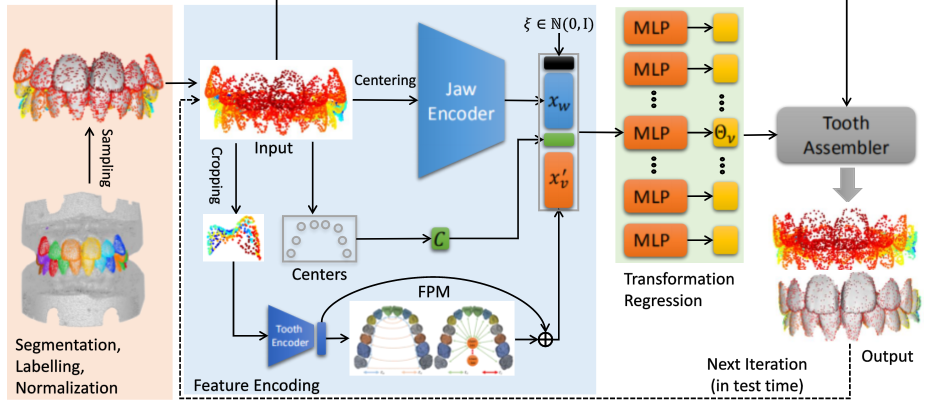-
- Steps
- 模拟单个牙齿和标记,并通过集合变形插入牙模中
- 在tooth alignment前后记录牙齿标记
- 通过采用3D thin plate spline技术生产新牙模 > 同时使用到牙冠和牙根的数据,对一颗完整的牙齿进行重排,而mesh数据中仅有牙冠,因此不适用。
-
本文主要针对虚拟正畸中的关键步骤:特征提取(牙齿表面特征:尖(cusps),grooves(凹槽),边缘(incisal edges),marginal ridges(边缘脊),occlusal surface boundary(咬合面边界)
虚拟正畸中输入数据是对3D mesh分割后所得到的单颗牙齿的集合。- 尖(cusps): Watershed Algorithm
- 其他特征: 基于曲率和二维截面聚类 > 这篇文章对牙齿表面的各个特征的特征讲的蛮详细的
Lian, C., Wang, L., Wu, T. H., Wang, F., Yap, P. T., Ko, C. C., & Shen, D. (2020). Deep multi-scale mesh feature learning for automated labeling of raw dental surfaces from 3D intraoral scanners. IEEE transactions on medical imaging, 39(7), 2440-2450. > Precisely labeling teeth on digitalized 3D dental surface models is the precondition for tooth position rearrangements in orthodontic treatment planning
基于深度学习 MeshSegNet, 具有开源代码,是专门针对牙齿的,将牙齿加上labal,是自动排牙所必备的一步
-
和上面那篇差不多
-
方法:The Signed Feature Histogram
需要输入训练数据后再检测
主要是为了识别出牙齿中的特征点,也是自动排牙所必备的一步 -
采用卷积神经网络
分割完后加上标签,输入多层感知机,进行位置重排
使用PointNet提取特征点